The rise of influencers – where did it begin?
Influencer marketing isn’t as new a concept as some may think - brands have been working with celebrities and other public figures for years. However, this relatively new wave of influencer marketing, where brands are seeking help from bloggers to promote their brand, products and/or services, has hit the ground running, with many brands now choosing to work with bloggers and social media influencers over the traditional celebrity. You might even say that social media influencers are the modern-day celebrities.
We interviewed two influencers - Chloe Plumstead and Helen Grieves - to get a first-hand insight into this money-making industry and get their thoughts on brand/influencer collaborations.
Since the early 2000s we have seen a rise in ‘online influencers’, spreading across multiple platforms, with the most common being Instagram, YouTube, Snapchat and Facebook. We have seen everyday people making careers out of blogging and becoming businesses within their own right. A question that is asked all too often is: ‘How do people make money from social media?’ There are a number of ways, for example, through affiliate links and by monetising banner adverts - but the most common way is by partnering with brands, some of which are often willing to pay into the thousands for a single product mention.
With the opportunity to earn thousands of pounds a month, blogging has quickly become one of the most sought-after careers among the younger generation. This can be seen in the below Google Insights graph which shows the rise in Google searches for ‘How to become an influencer?’

Five or so years ago, when many of today's ‘known’ bloggers began, the idea of it morphing from a hobby into a full-time career would never have crossed their minds. The potential was never really there in terms of it being monetised, nor did brands understand the benefits of influencer/brand collaborations. However, as the years have passed, influencers have proven their worth and brands seem to have clocked on to their value and ability to increase sales and brand awareness.
I started blogging when I was 17 and losing interest in my sixth form studies. I wanted to study English Literature at university so I was never going to quit, but I was definitely looking for a creative outlet to channel my energy into. Naturally, being 17, I didn’t keep writing consistently, but then when I quit my first year of university to apply elsewhere, I found I was without a platform for writing again. I launched my blog again and here we are, five years later. - Chloe Plumstead
Chloe Plumstead is the influencer behind The Little Plum, a fashion, beauty and lifestyle blog. With her thought leadership pieces and personal, honest voice behind all that she writes and posts, she has become a very trusted and relatable voice within the industry. Over her five years of blogging, Chloe has amassed over 60K followers on Instagram alone and doesn’t seem to be stopping there. We spoke to Chloe in an exclusive interview, asking questions on the industry, and why she feels influencers are so valuable to brands:
We are also the consumers. We know how to market products because we’re the exact type of person to buy them. There are so many different platforms available to bloggers and influencers now that the breadth of influence is massive; whilst some followers may not read blog posts, they might engage with YouTube videos, tweets, Instagram stories or Snapchats, so one blogger and one campaign can have a multipronged approach.
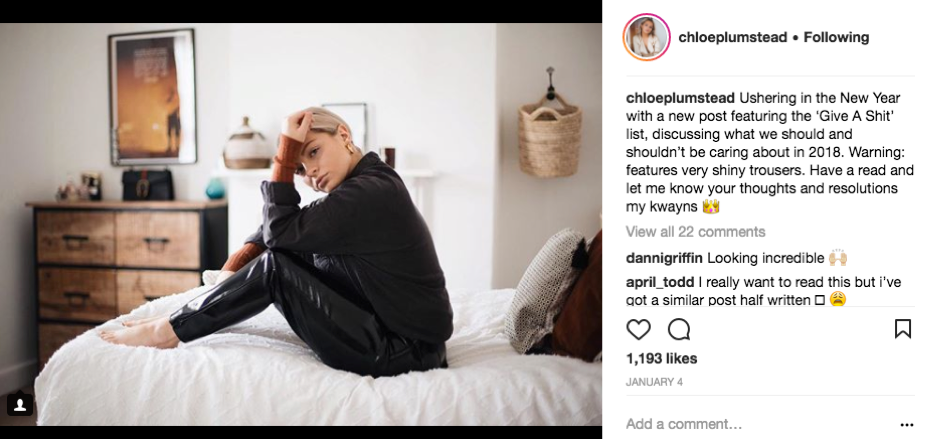
The current state of influencer marketing – so why is it important?
As a brand, there are many benefits of working with influencers from a content marketing perspective, for example improved SEO rankings, brand awareness, increased product sales, online engagement, but most importantly - content! Bloggers and influencers are essentially content creating machines, churning out multiple forms of content on a weekly basis. As a brand, why would you not want some of the best content creators making content to directly or indirectly promote your brand?
We asked Chloe how important she thought it was for brands to work influencers when creating content:
It is absolutely CRUCIAL. Blogging is no longer a bedroom hobby, it’s big business which has been proven to deliver ROI. The relationship built up over time between an influencer and their audience provides a golden opportunity for brands to be shared in a way that is organic, placing products or services in the ‘real world’ rather than through a faceless, nameless ad in a magazine.
Content types
With there being so many different forms of content, brands have the pick of the bunch. However, it's important to note and be aware of how different types of content perform. The performance and engagement on a piece of content will often vary from blogger to blogger.
We also spoke to influencer Helen Grieves, the face behind 3-year-old The Love Cats Inc.; a personal style and beauty blog.
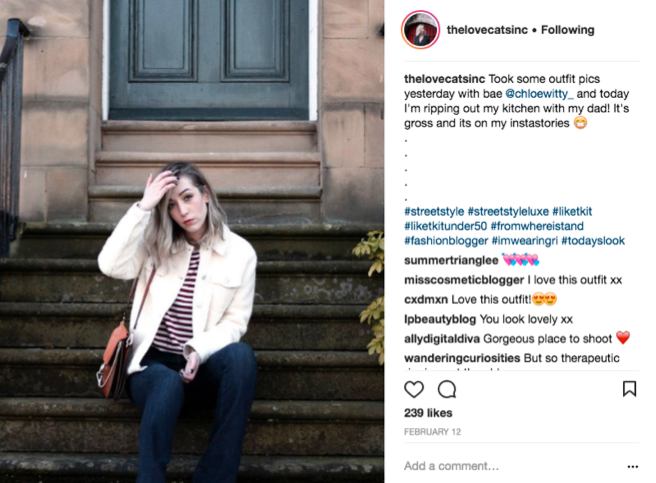
We asked Helen about her thoughts on influencer marketing and the types of content she thinks go down well with her audience.
I would say my outfit posts and my travel content are the most well received amongst my audience.
There are around 100 different types of digital content, however the three most popular among influencers are as follows:
Video - One of the most engaging forms of content, incorporating visuals and sound make for a much more personable and engaging feel. The most common platform for this type of content is YouTube, however Instagram stories and Instagram live videos are becoming regular and well received outlets for a lot of online influencers.
Images - One of the most used types of content across most social platforms, prominently Instagram and Snapchat - visual content will help to strengthen your brand image and is a quick and simple form of content which doesn’t require a lot of the consumer's time.
Blog posts - Most likely to be where the majority of online influencers began their journey and with written content always being a very well received content type, it hasn’t lost its place just yet. However, this is a form of content that requires time and effort from the consumer, so it's imperative that it's engaging from the get go.
Chloe understands and explains the value of different audiences and their engagements with different types of content:
I feel like I have two types of followers – those who enjoy reading long blog posts and interacting in the form of response comments and lengthy emails, and those who enjoy the quick hit of an Instagram fashion post.
Great influencer marketing examples
Defining a great piece of brand/influencer content isn’t always easy, as content can be perceived by people in different ways. Something that's seen as an amazing and positive campaign or piece of content can be seen as negative and brand damaging to someone else.
For example, a recent Nike campaign, which introduced their new plus size sportswear, gained a lot of negative attention -with some people even stating that the brand was ‘giving off a negative message’ and ‘encouraging an unhealthy lifestyle’. On the other hand, it had many people praising the brand for encouraging body confidence. These comments come from everyday people on social media, but what did people within the influencer industry think about the campaign? Chloe, someone who talks a lot about body positivity and equality, falls on side with Nike.
I love what Nike have done recently in working with plus-sized influencers such as Callie Thorpe and Grace Victory to promote the idea that exercise isn’t all about weight loss. They’ve done something different and actually listened to their consumers, especially those who have felt excluded from the conversation of fitness just because of their body. The collaboration feels genuine and there is a heart to it, and I love that these incredibly inspirational women have been able to spearhead the campaign.
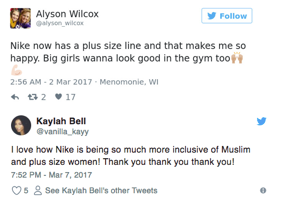
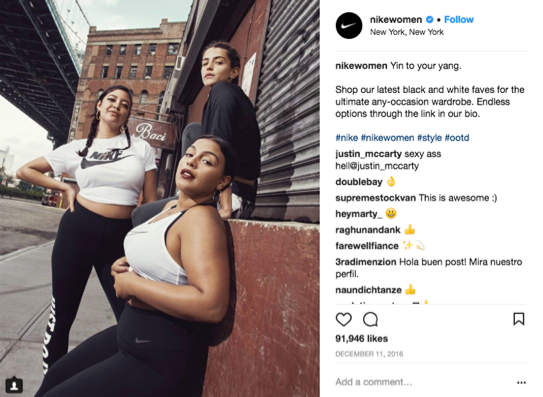
But not all comments from the audience were as complimentary:
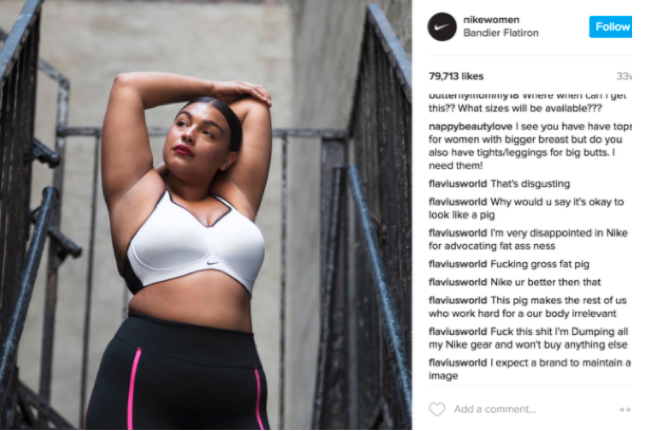
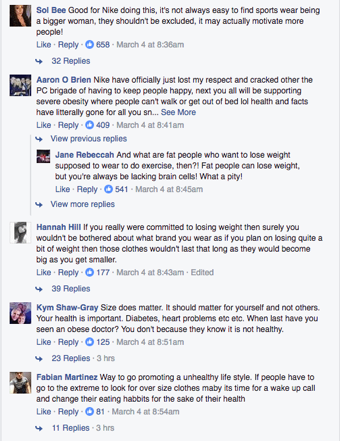
With many social media platforms now offering an ‘insights’ option, it's easier than ever to find out what content is working best for your brand.
One brand that has really found its feet in terms of content marketing and the use of online influencers is Daniel Wellington, a watch brand that seems to have taken Instagram by storm. The brand gifts influencers with a watch in return for a beautiful Instagram image of said watch, which is posted along with a discount code for their followers - a seemingly simple tactic that gets big results. The brand has amassed over 1.3 million posts using the hashtag #danielwellington, and has racked up over four million followers.
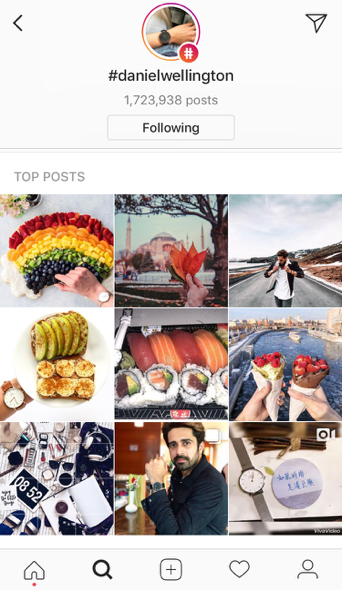
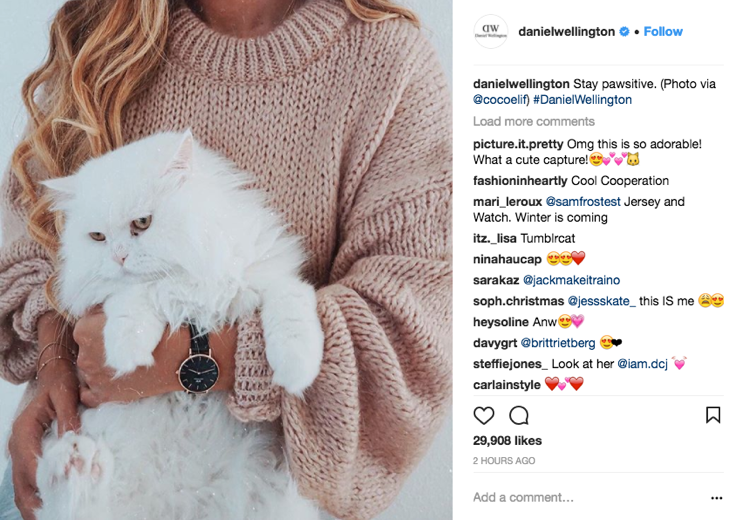
Mercedes-Benz is another example of a brand working with influencers and doing it well. In 2016, they partnered up with YouTube vlogger Casey Neistat to create a four-part commercial for the Mercedes-Benz CLA. With over nine million subscribers to his channel, and a reputation for being one of the best video/filmmakers on the platform, Casey seemed to be the perfect person to team up with. At the time of writing (March 27, 2018) the videos had received a combined viewing of 6,877,017.
From the comments on Casey’s videos alone, you can see just how well received this piece of content was, with some people even stating that they were going to purchase the $30,000 car.

Casey shared his views on the future of online marketing on the Mercedes-Benz site.
What’s new is this inundation of content. You and I are no longer watching TV at the end of the day, with commercials every six minutes. Now we’re behind computer screens eight hours a day, we’re checking Facebook, we’re on YouTube and we’re constantly falling victim to this barrage of media. It has forced people to get really good at ignoring things. As TV viewers, we’re largely reactive, now we’re proactive. We get to decide what we want to watch and what not. We can close a window any time. So how do you get people to still be interested about your brand? My response to that is: tell people a story, a story they care about, whether or not it has to do with the product, because at the end of it, if they enjoyed the experience of the story, their regard for the company will only be raised.
This is something for brands to take into consideration when planning their own influencer strategy.
It is key to make sure the content you're creating is engaging and going to leave the consumer with a positive and lasting image of your brand. Make sure you're choosing the right people to front the campaign, and can appeal to the audience you are trying to reach.
Picking the right influencer
As a brand, it's important to pick your influencers wisely, just as Mercedes-Benz did. It's key to consider your brand's voice and ethos as well as the type of content you're looking for and the message you want it to portray. Then, choose the person you think will best represent those key factors.
Contacting bloggers and getting a response can be notoriously difficult, especially when contacting bigger bloggers as they are likely to receive hundreds of emails a week, and if your email doesn’t stand out, it's likely to go unnoticed. However, there are a few things you can do to stand out within an overcrowded inbox.
- Choose a simple, yet engaging subject line that will grab their attention
- Be sure to use their name
- Introduce yourself and where you are contacting from and make them aware of your credibility
- Make sure you've done your research and know who they are - mention parts of their blog that you like, but don’t go all-out ‘fangirl/boy’!
- Don’t bombard them with too much lengthy in-depth information too soon - you need to gauge their interest first
- Tell them why you think they are a good match for this particular collaboration
- Make it a mutually beneficial deal - if they're going to take time out to work with you, it needs to provide some value for them
Our influencers chimed in on what stands out to them when a business pitches to them:
Using someone’s name when you contact them makes a big difference in whether they’ll reply or not. Also, if you’re asking someone to produce so much content for you (i.e. blog post, video, social media promotion etc.) then they probably won’t do it for a £5 mascara. There is value in readers/followers, people trusting said bloggers opinion and overall influence and promotion should be paid for. - Helen Grieves
Make sure to spell their name properly, be realistic and respectful in what you’re asking for (don’t try and push for as much content as possible if you don’t think it’s a fair exchange), and give creative freedom. Try to trust the vision of the influencer and understand that although you may want one very specific type of content, what they share will influence how likely their followers are to continue engaging with them, and how likely other brands are to get in touch. It has a direct impact on their livelihood so they have a right to be selective. - Chloe Plumstead
Understanding the benefits for the influencer
It may seem as though all benefits of influencer/brand collaborations sit with the brand. However, there are actually many reasons as to why brand collaborations work so well for influencers too. Making a deal mutually exclusive will set the right tone with your chosen influence – as influencers have to make a living too and brand collaborations are one of their main sources of income. Other reasons include:
- Brand awareness - Influencers are essentially their own brand, and when working with a large brand, it puts their name out to a larger audience than their own, which often increases their following and engagement, gets them recognised by other brands and opens up further brand collaboration opportunities.
- Networking - Not only do influencers build new relationships with the brands they work with, going to events with these different brands means they are able to build relationships with other bloggers in and out of their niche and even journalists, both of which have their benefits.
Brand collaborations
When it comes to a brand deciding how they would like to collaborate with an influencer, they first need to work out what the goal of the campaign is. What are they looking to achieve? Is it to drive sales or increase brand awareness? Once this has been established, they can then begin to look at which collaboration tactics will be most beneficial to the brand.
There are a number of quick-win tactics for an influencer strategy - many of which are quite obvious, especially now that the FTC regulations require all brands and influencers to disclose all sponsored content. The most common ways in which brands work with influencers are as follows:
- Discount codes - brands (such as Daniel Wellington) will often provide influencers with a discount code to offer their followers, which drives people to make purchases on impulse, thus driving sales for the brand.
- Competitions/Giveaways - An influencer is asked to either host a competition/giveaway on their social media or to promote a competition/giveaway that is hosted on the brand's page. This works best for brand awareness.
- Brand ambassadors - This type of collaboration essentially means that an influencer becomes the face of the brand for a period of time.
- Sponsored posts - Probably the most common way in which brands and influencers work together. An influencer is paid by a brand to write about a particular product/service.
- Social media takeover - Often a brand will ask an influencer to take over their social media account, posting images and creating Instagram stories detailing their day.
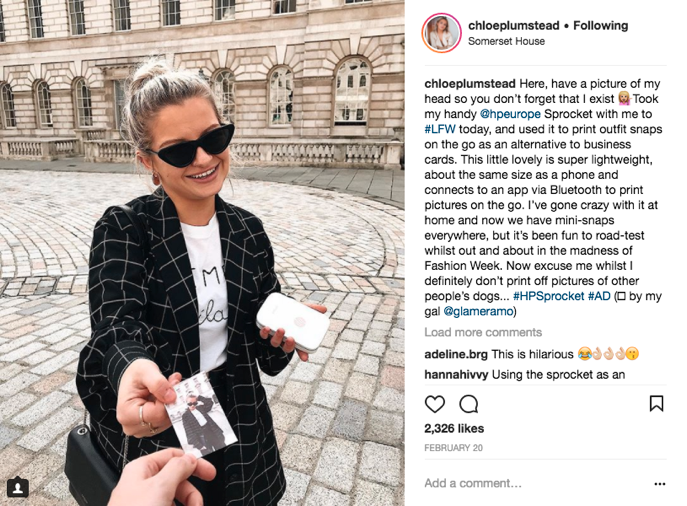
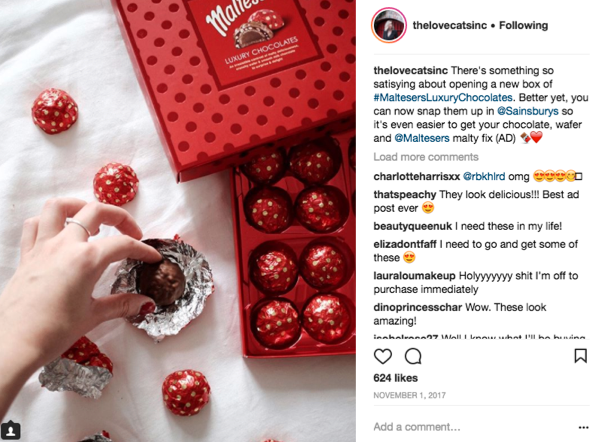
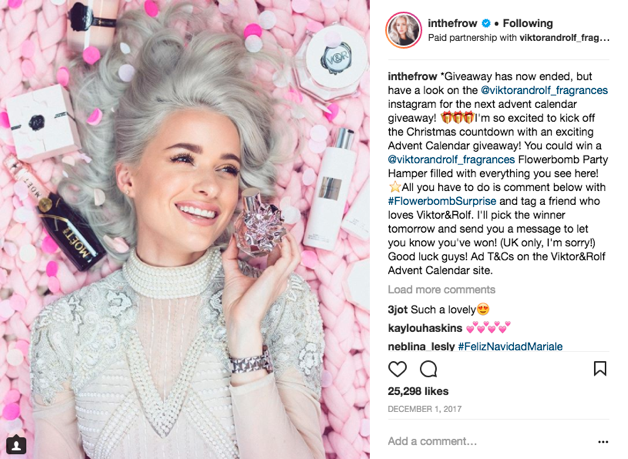
The future...
Brand /influencer marketing is currently in its prime and it doesn’t look as though it's going anywhere anytime soon. What is interesting, is hearing what influencers expect for the future of influencer marketing...
In keeping with the rest of the digital world, everything is getting smaller and quicker. I think blog posts will eventually die out, and Instagram will become the main platform for sharing. The rise in sponsored stories will continue. I also think there will be more long-term partnerships – ‘ambassador programs’, as they’re called – as opposed to one off sponsored campaigns. I think brands are recognising the value in longevity and continued exposure to the same audience. - Chloe Plumstead
The results are mutually beneficial: bloggers are becoming influencers and making a name for themselves through brand collaborations and being exposed to new audiences with every collaboration they accept. Brands are gaining continued brand awareness and seeing an increase in sales, by being exposed to different influencer's audiences.
Thank you to Chloe and Helen for their input - if you have any questions about this post, or want to see what your brand can do with influencers, then get in touch and check out our services page!
Sign up for our monthly newsletter and follow us on social media for the latest news.
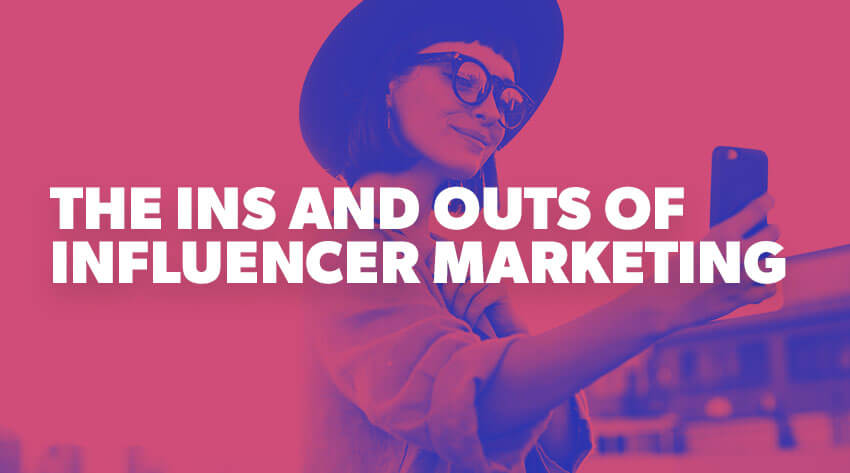




 Proudly part of IPG Mediabrands
Proudly part of IPG Mediabrands